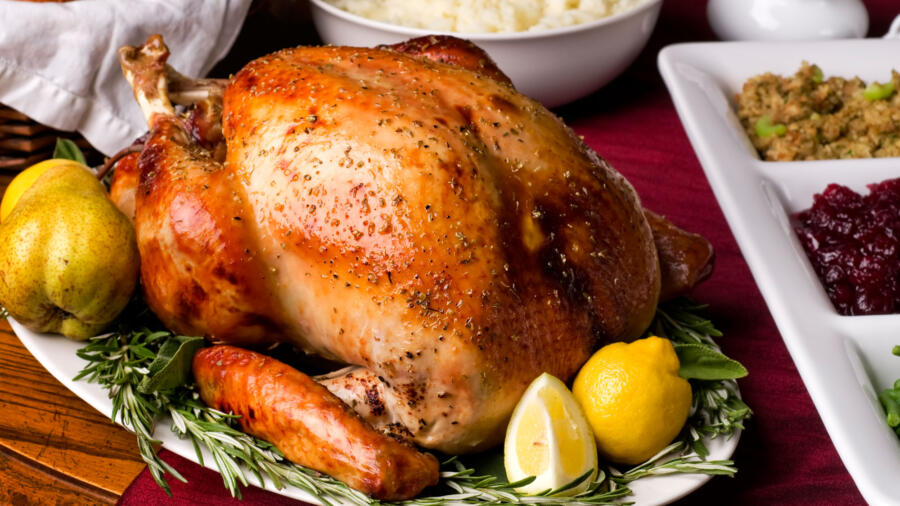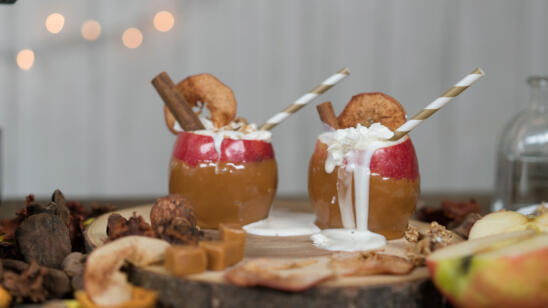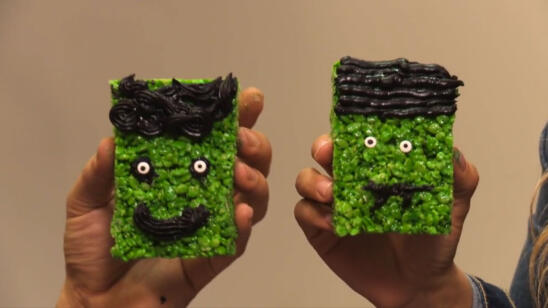Cooking a turkey for Thanksgiving can be intimidating, especially if you’ve never done it before. There are many steps involved, and the entire process takes several days! With these helpful tips, you can successfully prepare a turkey like a pro—without any stress or mess—even if it’s your first time.
1. Pick the right bird
In general, an 18-pound turkey (a good point of reference) serves approximately 12 people, just to give you an idea of portion size per bird. For a bigger family, get two small turkeys (about 12 pounds each) instead of a big one. This makes it easier to fridge and prepare, and they cook quicker and more evenly. With a variety of turkeys available (organic, kosher, free-range, etc), you should choose the one that interests you most. Remember, it’s perfectly fine to buy a simple and traditional fresh turkey; just choose one that looks healthy. If you’re pressed for brining time, a kosher turkey has already spent time in salt.
2. Thaw of the wild
Most everyone has their thawing tricks, and expect about 10 hours for a fast thaw. An easy and effective way to thaw is placing the wrapped turkey in a cooler with a drain spout. Keep it submerged in cool water (40 degrees or colder), and drain every two hours. Keeping the whole thing in the bathtub makes less of a hassle for water drainage. You can choose to slow thaw, which takes about four days for an 18-pound turkey. Place the bird in a cooler with the bottom layered in ice, or leave it in the fridge in a pan.
3. Let it brine
If you don’t have a family recipe/procedure for brining, rest assured it’s an easy step in the turkey process (just a bit time consuming). Brining gives the turkey extra flavor and helps it come out moist, so it’s pretty important. Fill a large pan with half a gallon of hot water, 2/3-cup sugar and a pound of salt. Allow the crystals to dissolve by stirring, then add 8 pounds of ice (equal to a gallon of water) and 16 cups of vegetable broth (optional). You can also do this on a stovetop with high heat.
While you let the concoction chill, remove all the thawed turkey parts that you will not be using (neck, organs, giblets, etc). NOTE: Many people save these parts to use for a later broth, gravy or literally dog food. Rinse the turkey well, then place it in an oven bag, breast-up.
Pour the brine over the turkey. Feel free to add herbs and spices to your liking, like rosemary and sage. Make sure the turkey is fully covered (you may have to force it) and secure the bag with a twist tie. You can also do this in a cooler without the bag, which allows you to keep it outside for fresh cooling. Let it brine for about 10 hours at 40 degrees (minimum) in temperature, and check periodically. Then remove the turkey from the brine and let it dry overnight before roasting for crispier skin and juicer meat.
4. The good stuff
A Thanksgiving turkey without stuffing is like a Christmas fireplace without a stocking. Whether you bake the stuffing separately or stuff inside the turkey is entirely up to you. It’s more common these days to skip stuffing the bird for the roast (stuffing can make a mess and takes longer to cook, which makes the turkey drier). If you do stuff the bird, leave room for the stuffing to expand. Keep in mind, stuffing the turkey means a little more time to roast. For an 18-pound turkey, allow 20 to 30 more minutes.
5. Roast the bird
Set your oven to 325 degrees, which is a great temperature for the entire duration. Some people may blast the turkey with high heat first (425 to 500 degrees) for about 30 minutes, then reduce it to 325. This saves you about an hour or so with cooking time. Set the turkey on a V-shaped roasting rack on a large roasting pan, then rub the heck out of it with butter or olive oil (this helps it brown evenly). Place it in the oven, breast-down (this allows the turkey’s natural juices collect in the breast) and let it roast to a nice brown for about half an hour. Remove the bird, flip it and roast for about four hours.
6. Check the final results
The best way to ensure your turkey is not overcooked is to insert a thermometer probe in the thickest part of the high. You’re gauging for a 170 to 180 degree temperature. When you get the right reading, let the bird rest for about 30 minutes. You don’t want to slice up the turkey straight from the oven as the juice will run all over the place (keep the turkey juicy!).
7. Enjoy!
You now have the perfect turkey! Get carving.


